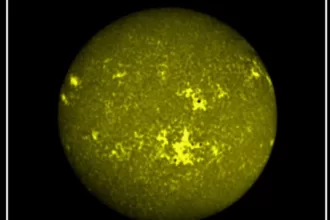Following the tsunami warning, people have been urged to leave the coastal areas of Ishikawa, Niigata, Toyama, and Yamagata prefectures as soon as possible. Waves up to 5 meters (16 feet) high are said to be possible.
On New Year’s Eve, Japan released troubling news. A powerful earthquake of 7.5 magnitude struck here, causing several aftershocks. As a result, a tsunami warning has been issued for a large portion of the country’s western coast. However, a tsunami wave of 1.2 meters has been reported to have hit Wajima in Ishikawa province. There is currently no word of any damage, but officials have been directed to immediately transport people to safe locations.
Meanwhile, Japan has issued another earthquake warning for Ishikawa, Niigata, and Toyama, Nagano prefectures. At the same time, the video of the tsunami that hit Toyama City is going viral on social media. However, it cannot be said whether this video is from now or earlier.
Waves as high as 1.2 meters were seen at Wajima Port in Ishikawa Prefecture, according to the Japan Meteorological Agency.
Following the tsunami warning, people have been advised to leave the coastal areas of Ishikawa, Niigata, Toyama, and Yamagata prefectures as soon as possible. Waves of up to five meters (16 feet) in height are predicted. Residents of coastal areas have been asked to relocate to safer areas.
#JAPAN has been hit by a massive 7.6 #EARTHQUAKE!
Orders to evacuate have been issued, along with tsunami warnings.
I hope everybody is safe🙏 pic.twitter.com/hZrLPk5a3Y
— Tansu Yegen (@TansuYegen) January 1, 2024The Pacific Tsunami Warning Center in Hawaii has said that there is a possibility of dangerous tsunami waves within 300 kilometers of the epicenter of the earthquake on the Japanese coast. Let us tell you, earthquake tremors were felt in Tokyo and the entire Kanto area.
Shocks felt so many times
The Japan Meteorological Agency (JMA) said a 5.7-magnitude earthquake struck at 4:06 p.m. local time in the Noto area on the Sea of Japan side of Japan’s main island of Honshu. After this, an earthquake of 7.6 magnitude at 4.10 pm, an earthquake of 6.1 magnitude at 4.18 pm, an earthquake of 4.5 magnitude at 4.23 pm, an earthquake of 4.6 magnitude at 4.29 pm, and an earthquake of 4.8 magnitude at 4.32 pm. There was an earthquake.
The US Geological Survey reported that another earthquake of magnitude 6.2 struck soon after.

The tsunami that followed the 2011 earthquake killed 18,000 people. In March 2011, a devastating earthquake with a magnitude of nine caused a massive tsunami in Japan. The resulting tsunami waves destroyed the Fukushima Nuclear Power Plant. In terms of environmental damage, this was deemed a major incident. Then 10-meter-high waves in the sea wreaked havoc on many cities. This resulted in the deaths of approximately 18 thousand people.
Japan is situated on the Ring of Fire
Japan is located in an earthquake-prone area. It is located in the Pacific Ring of Fire. The Ring of Fire is a region in which oceanic and continental plates coexist. An earthquake occurs when these plates collide with each other. Tsunamis and volcanoes erupt as a result of their impact.
In December of last year, the Philippines experienced an earthquake. In early December of last year, earthquake tremors were felt in the Philippines. It had a magnitude of 6.8 on the Richter scale. The earthquake struck around 01:20 a.m., according to the National Seismological Centre. Its center was located in Mindanao at a depth of 82 kilometers.

The US Tsunami Warning System initially predicted waves of up to three meters (10 feet) along parts of the Philippines coast but later declared that no tsunami threat existed. According to the statement, the threat of a tsunami from the earthquake has now been eliminated based on all available data. Tsunami waves of up to one meter (3.2 feet) were expected to hit Japan’s southwest coast.
Read More: North Korea will launch 3 more military spy satellites, Kim Jong wants to capture South Korea






